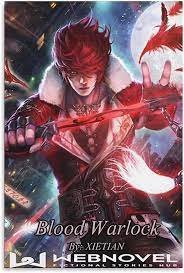“The Art of War,” written by the ancient Chinese military strategist Sun Tzu, is a timeless masterpiece on strategy, leadership, and conflict resolution.
Over 2,500 years old, this influential text offers timeless insights on success through planning, adaptability, and strategic thinking.
“The Art of War” remains pertinent, guiding diverse fields like business and politics toward victory, retaining its timeless wisdom.
| Title | The art of war |
| Author | Sun Tzu |
| Publisher | Filiquarian; First Thus edition (November 1, 2007) |
| Language | English |
| File Format | |
| Number of pages | 68 pages |
| Customer Reviews | 4.5 out of 5 stars 12,305 Reviews |
see also – Their Eyes Were Watching God Novel summary, Movie by Zora Neale Hurston
The Art of War Book summary by Sun Tzu
Sun Tzu’s treatise is divided into thirteen chapters, each addressing a different aspect of warfare and strategy.
Though military in origin, the book’s principles transcend the battlefield, influencing various aspects of life and decision-making, offering enduring wisdom.
1. Laying Plans: This chapter emphasizes the importance of careful planning before entering any endeavor. It stresses the need to analyze both one’s own strengths and weaknesses, as well as those of the opponent.
2. Waging War: Sun Tzu discusses various strategies for different types of terrain and circumstances. Sun Tzu promotes adaptability, favoring avoidance of direct conflict as the most effective strategy to conquer foes, emphasizing flexibility.
3. Attack by Stratagem: This chapter explores the use of deception and manipulation in warfare. It teaches how to create advantageous situations through surprise attacks and psychological warfare.
4. Tactical Dispositions: Sun Tzu explains the importance of positioning and adapting one’s formations to exploit the opponent’s weaknesses. He highlights the significance of understanding the changing dynamics of battle.
5. Energy: This chapter focuses on the proper allocation of resources and the importance of conserving one’s energy for decisive moments.
6. Weak Points and Strong: Sun Tzu stresses exploiting the enemy’s vulnerabilities while strengthening one’s strengths, a strategy to gain advantage and ensure success.
7. Maneuvering: Highlighting the importance of flexibility, this chapter discusses the art of positioning and maneuvering troops to gain a strategic advantage.
8. Variation in Tactics: Sun Tzu advocates for unpredictability in tactics to keep the opponent off balance and unable to effectively counter strategies.
9. The Army on the March: Addressing logistics and discipline, this chapter delves into the importance of efficient organization and maintaining morale during campaigns.
10. Terrain: Sun Tzu emphasizes the significance of understanding and adapting to the geographical and environmental factors that can impact battle outcomes.
11. The Nine Situations: This chapter categorizes various situations that can arise in warfare, providing insights into how to respond effectively to each scenario.
12. The Attack by Fire: Sun Tzu discusses the use of fire as a tactical weapon and the psychological impact it can have on the enemy.
13. The Use of Spies: The final chapter explores the role of intelligence gathering and espionage in warfare, highlighting the value of information in strategic decision-making.
see also – Invisible Man Novel Summary by Ralph Ellison(download pdf)
The Art of War Book summary by Sun Tzu: download pdf
“Sun Tzu’s ‘The Art of War’: timeless strategic wisdom extends well beyond warfare, guiding leadership and strategy in diverse endeavors.”
Its teachings have influenced countless individuals seeking to navigate the complexities of competition, conflict, and decision-making.
FAQs
Sun Tzu was a Chinese military strategist, philosopher, and author believed to have lived during the Eastern Zhou Period (771–476 BCE).
While “The Art of War” was originally written as a treatise on military strategy, its principles have been applied to a wide range of fields beyond warfare.
Several key takeaways from “The Art of War” remain relevant in contemporary contexts: Strategic Planning, Adaptability, Understanding the Enemy, Leadership, Deception and Psychology.
Conclusion
Sun Tzu’s “The Art of War” remains a strategic cornerstone, providing timeless leadership principles transcending military contexts for enduring relevance.
Its teachings have influenced countless individuals seeking to navigate the complexities of competition, conflict, and decision-making.
Sun Tzu’s wisdom, rooted in preparation, adaptability, and power dynamics, remains a guiding light for success in our evolving world.

